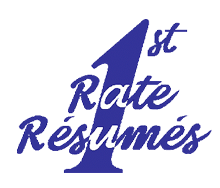When I write a resume I do everything I can to keep the reader in mind. What are they looking for on a resume? And how can I quickly draw their eye to what the readers is seeking.
Problem is, readers of resumes are all in search of different attributes, although they all seek someone who is going to have a positive impact on the bottom line. In other words, employers want a worker who will generate more revenue or savings than the employee will cost in annual salary and benefits.
So here are a few ways to help readers easily navigate your resume.
SUMMARY: In 20 seconds or less you need to communicate how you can effectively fill the role of the position you’re applying for. Have a degree and 5+ years experience? Mention it. Bilingual? It also needs to be stated up front. Other traits are also good to might include preferences: such as willing to work weekends, holidays, and nights.
CORE COMPETENCIES: One or two word bullet points that quickly point out your expertise. List 9 or 12.
EDUCATION: Where does it go? That depends on where you are in your career. If you just graduated college and have little to no experience in your field, than emphasize education toward the top of the resume. If you have more experience than education, the education goes last on the resume. That’s where recruiters typically look for it first. Whatever you do, don’t bury it somewhere in the middle of page two. It will be over looked.
BULLET POINTS: Don’t exceed 9 in a row. The eyes get bored and glaze over a whole bunch of text.
FONTS: Even though we have access to fancy fonts, the issue at hand is that not all recipients have the same fonts you do. So stick to the basics: Arial, Times New Roman, Helvetica, and New Century Schoolbook. Don’t go below 10 point and don’t exceed 12 point. Eleven-point font is preferred. I’ve gone so far as to use 10.5 for better balance when necessary.
September is Update Your Resume Month. These tips are provided to you by 1st Rate Resumes.
